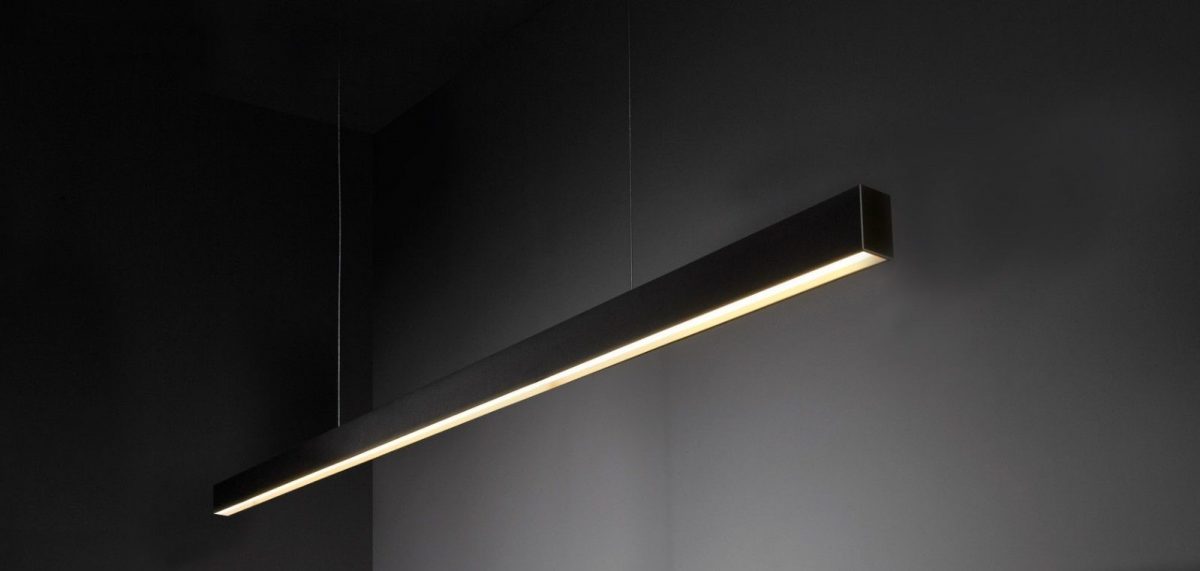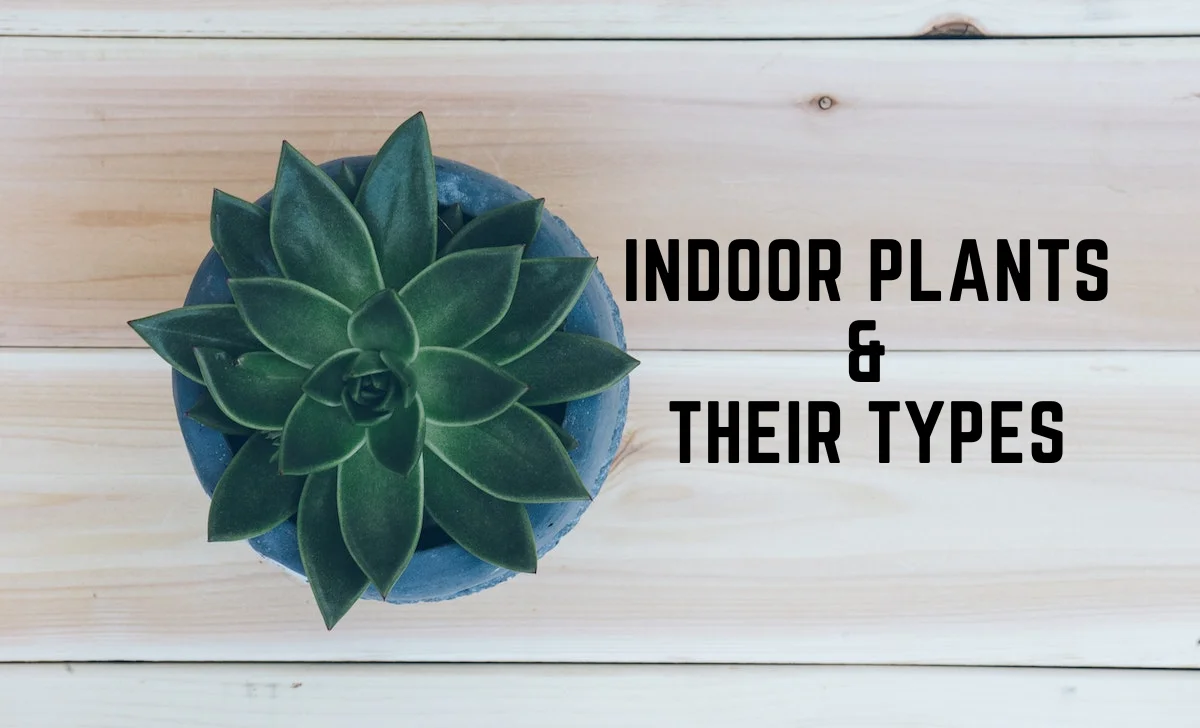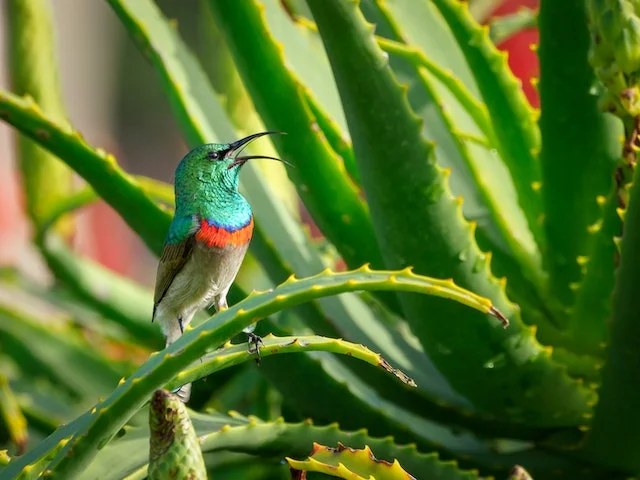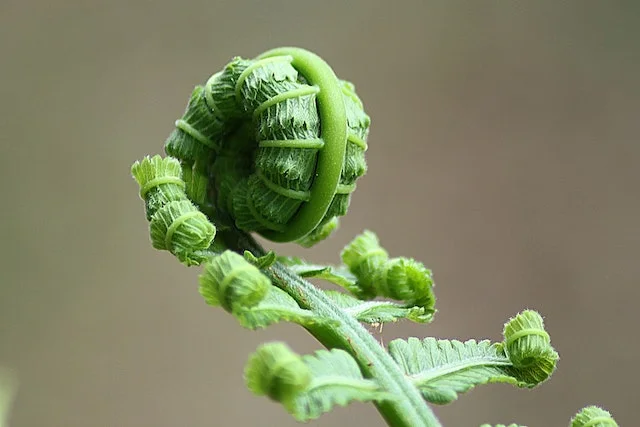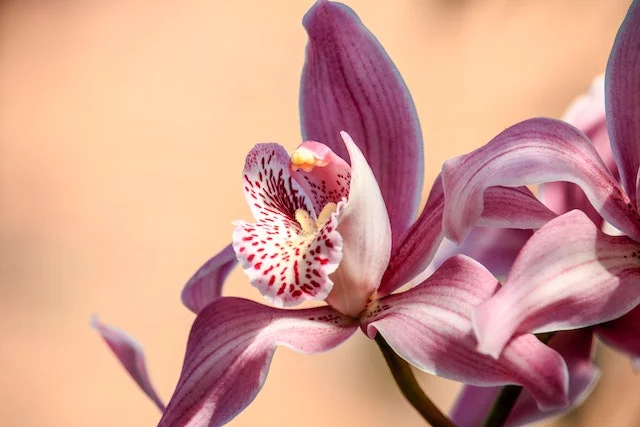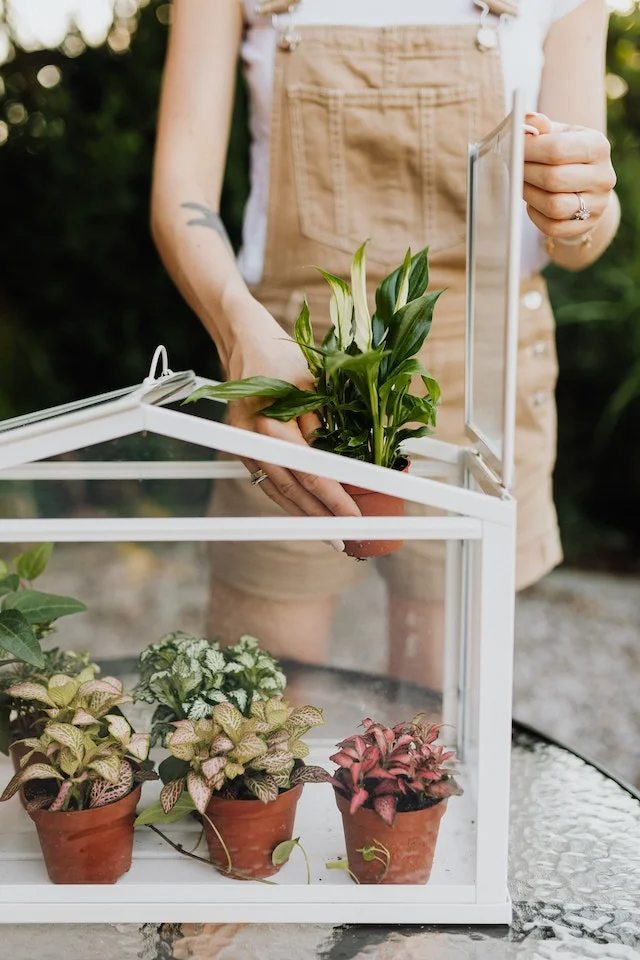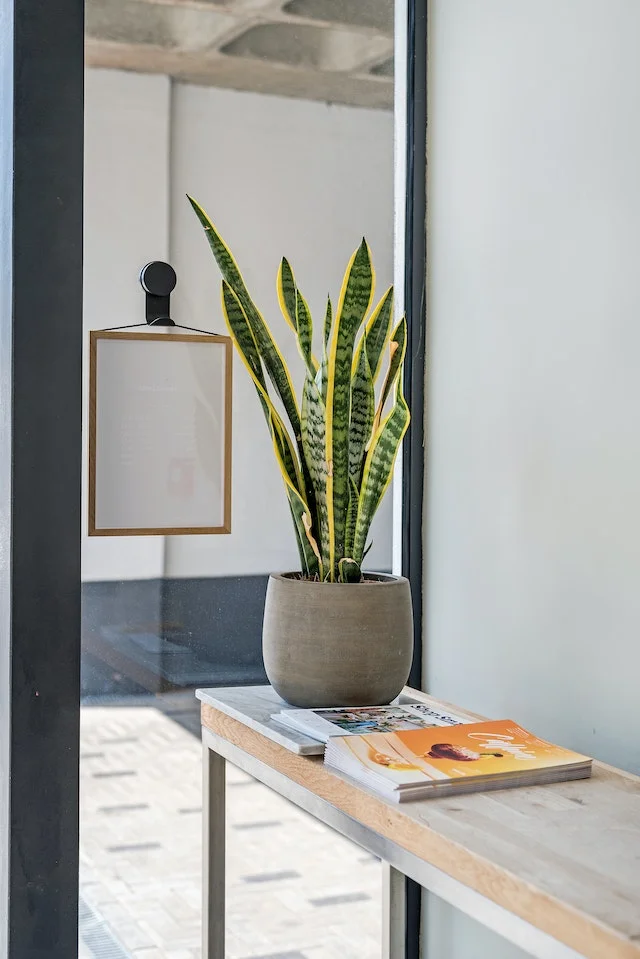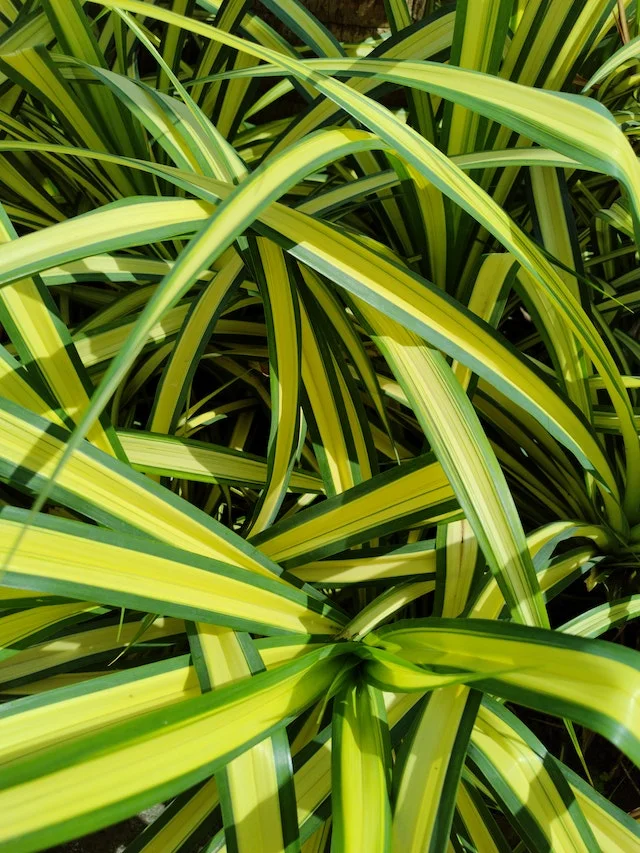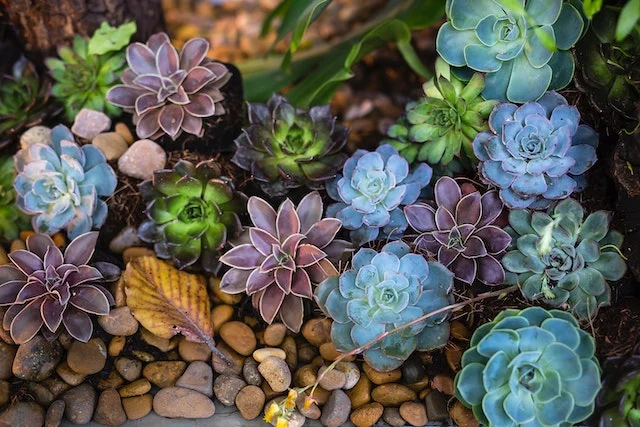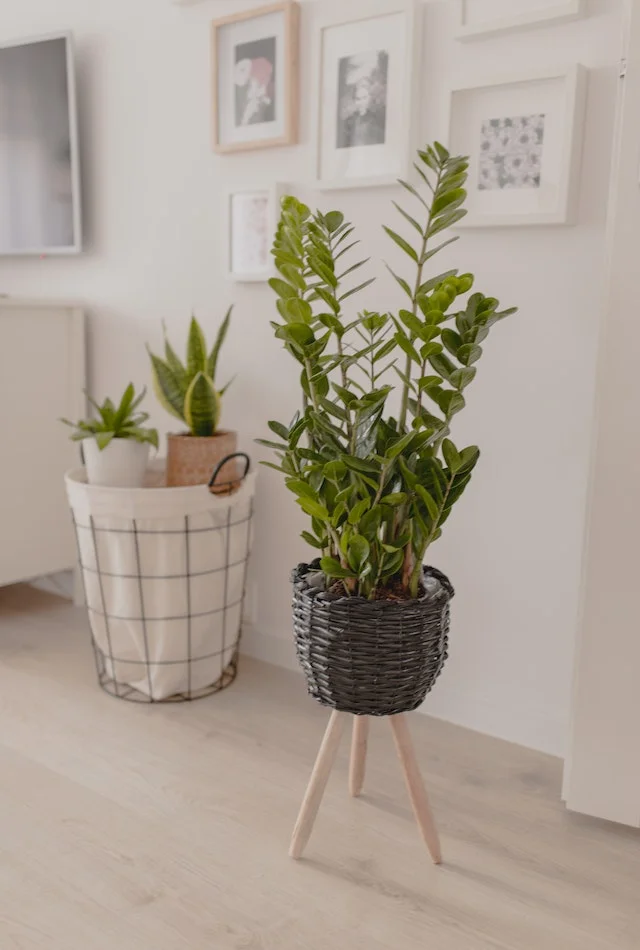Indoor Plants & Their Types: Indoor plants have become increasingly popular in recent years as people recognize the numerous benefits they offer. Not only do they enhance the aesthetic appeal of our living spaces, but they also contribute to our overall well-being. In this article, we will explore the different types of indoor plants and learn how to care for them effectively.
Introduction to Indoor Plants
Indoor plants are species that are specifically suited to be grown indoors. They are adapted to thrive in the lower light levels and controlled environments found inside our homes and offices. These plants are known for their ability to purify the air by removing toxins and releasing oxygen, thus creating a healthier indoor environment.
Benefits of Having Indoor Plants
Having indoor plants offers a multitude of benefits. Firstly, they act as natural air purifiers by removing harmful pollutants from the air. This can help reduce the risk of respiratory issues and improve overall air quality. Additionally, indoor plants have been shown to reduce stress, boost mood, and increase productivity. They can also add a touch of nature and beauty to any indoor space, making it more inviting and vibrant.
Factors to Consider Before Choosing Indoor Plants
Before selecting indoor plants, it’s essential to consider a few factors to ensure their successful growth and longevity. One crucial factor is the light requirements of the plant. Some plants thrive in bright, direct sunlight, while others prefer low-light conditions. Understanding the light levels in your space will help you choose the right plants.
Watering needs are another crucial consideration. Different plants have different moisture requirements, and overwatering or underwatering can harm their health. It’s important to strike the right balance and water plants according to their specific needs.
Space availability is another factor to keep in mind. Some indoor plants can grow tall and wide, while others are more compact. Assessing the available space will allow you to choose plants that fit well without overcrowding the area.
Maintenance level is also a consideration. Some plants require regular care, while others are more low-maintenance. Consider your schedule and commitment level to ensure you can provide the necessary care for your chosen plants.
Popular Types of Indoor Plants
There is a wide variety of indoor plants to choose from, each with its unique characteristics and care requirements. Here are some popular types of indoor plants:
- Succulents: These plants are known for their fleshy leaves and ability to store water, making them ideal for dry indoor environments. Succulents come in various shapes, sizes, and colors, making them versatile for both indoor and outdoor spaces.
- Ferns: Ferns are known for their lush, green foliage and are popular for adding a touch of elegance to indoor spaces. They thrive in moderate to low light conditions and require consistent moisture to thrive.
- Orchids: Orchids are prized for their exotic and beautiful flowers. While they may require a bit more care and attention, they can be incredibly rewarding to grow indoors. Orchids thrive in bright, indirect light and require specific watering and humidity levels.
- Snake plants: Snake plants, also known as Sansevieria, are excellent choices for beginners. They are known for their resilience and ability to tolerate low light conditions. Snake plants have striking upright leaves that come in various patterns and colors.
- Peace lilies: Peace lilies are elegant plants with glossy green leaves and white flowers. They are renowned for their air-purifying properties and their ability to thrive in low to moderate light conditions. Peace lilies also indicate when they need watering by drooping their leaves, making them easy to care for.
- Spider plants: Spider plants are popular for their cascading leaves, making them great choices for hanging baskets or elevated surfaces. They are low-maintenance plants that prefer bright, indirect light and moderate watering.
- Pothos: Pothos, also known as Devil’s Ivy, is a versatile trailing plant that can thrive in a wide range of lighting conditions. They have heart-shaped leaves that come in various shades of green, making them a popular choice for adding greenery to any room.
- ZZ plants: ZZ plants are known for their glossy, dark green leaves that can brighten up any space. They are incredibly resilient and can tolerate low light and irregular watering, making them perfect for busy individuals.
- Rubber plants: Rubber plants have large, leathery leaves that come in shades of green or burgundy. They prefer bright, indirect light and moderate watering. Rubber plants can grow tall and make a bold statement in any room.
- Aloe vera: Aloe vera is not only a popular indoor plant but also a medicinal one. It has fleshy leaves that contain a gel with various healing properties. Aloe vera plants thrive in bright light and require well-draining soil.
How to Care for Indoor Plants – Indoor Plants & Their Types
Caring for indoor plants requires attention to their specific needs. Here are some essential care tips:
Light and Temperature
Place your indoor plants in areas that provide adequate light for their specific requirements. Some plants prefer direct sunlight, while others thrive in indirect or low-light conditions. Additionally, be mindful of temperature fluctuations and avoid placing plants near drafts or heating sources.
Watering and Humidity
Proper watering is crucial for the health of indoor plants. Each plant has different water requirements, so it’s important to understand their specific needs. As a general rule, allow the soil to dry out slightly between waterings and avoid overwatering, which can lead to root rot. Monitor the humidity levels in your home, as some plants thrive in higher humidity environments.
Soil and Fertilization
Use well-draining soil specifically formulated for indoor plants. Regularly check the soil moisture and adjust your watering accordingly. Fertilize your plants with a balanced indoor plant fertilizer according to the instructions provided. This will provide them with the necessary nutrients for healthy growth.
Pruning and Grooming
Regularly trim and prune your indoor plants to maintain their shape and promote healthy growth. Remove any yellowing or dead leaves to prevent the spread of diseases and pests. Grooming includes dusting off leaves and occasionally wiping them with a damp cloth to keep them clean and free from dust build-up.
Decorating with Indoor Plants
Indoor plants not only contribute to a healthier environment but also add beauty and style to our living spaces. Here are some tips for decorating with indoor plants:
Choosing Suitable Pots and Containers
Select pots or containers that complement the overall style of your space. Consider the size and growth potential of your plants when choosing containers to ensure they have enough room for their roots to grow. Additionally, opt for pots with drainage holes to prevent overwatering.
Placement and Arrangement
Strategically place your indoor plants to create focal points and enhance the aesthetics of your space. Consider the lighting requirements of each plant and position them accordingly. Place taller plants at the back and shorter ones in front to create depth and visual interest.
Creating Focal Points
Use indoor plants as focal points in your room by selecting larger, eye-catching plants and placing them in prominent areas. This can be near windows, in empty corners, or as centerpieces on tables or shelves. Focal plants can become the centerpiece of your decor, adding a touch of freshness and natural beauty.
Hanging and Trailing Plants
Utilize hanging baskets or macrame plant hangers to showcase trailing plants. Hang them near windows or from the ceiling to add a vertical element to your decor. Trailing plants like pothos, spider plants, and trailing succulents create a cascading effect that adds visual interest and fills empty spaces.
Grouping Plants for Visual Impact
Create visually appealing displays by grouping plants of varying heights, shapes, and textures. Combining different types of plants in a single arrangement can create a lush and vibrant display. Experiment with different combinations to find the perfect balance and harmony.
Common Challenges and Troubleshooting Tips
While indoor plants can be rewarding to grow, they may face certain challenges. Here are some common issues and troubleshooting tips:
Overwatering and Underwatering
Overwatering or underwatering is a common mistake that can harm indoor plants. It’s essential to strike the right balance. Check the soil moisture regularly and adjust your watering accordingly. Make sure the pots have proper drainage to prevent waterlogging.
Pests and Diseases
Indoor plants are susceptible to pests such as aphids, spider mites, and mealybugs. Inspect your plants regularly for signs of pests and take appropriate measures to control them. Common treatments include using insecticidal soaps or neem oil. Additionally, be mindful of common diseases like powdery mildew or root rot and take necessary preventive measures.
Yellowing Leaves
Yellowing leaves can be a sign of various issues, including overwatering, underwatering, nutrient deficiencies, or pests. Assess the situation and adjust your care routine accordingly. Trim off yellowing leaves to promote healthy growth.
Wilting and Drooping
Wilting or drooping leaves can indicate underwatering, overwatering, or environmental stress. Evaluate the moisture levels and adjust watering as needed. Ensure your plants are placed in suitable lighting conditions and away from drafts.
Leggy Growth
Leggy growth occurs when plants stretch towards light sources, resulting in long, weak stems. To prevent leggy growth, provide adequate light and rotate your plants regularly to ensure even exposure to sunlight. Pruning can also help promote bushier growth.

